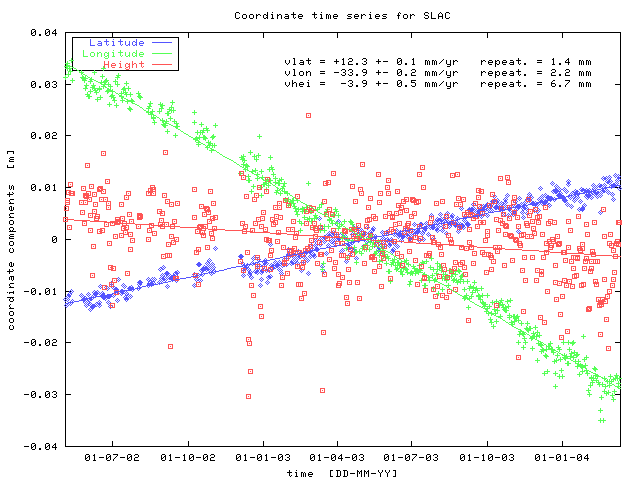Coordinate Time SeriesThe daily solutions of the regional network are transformed onto the ITRF2000 reference frame by means of a six-parameter Helmert transformation (no significant scale parameter). The parameter determination is based on the stations AMC2, DRAO, JPLM, MDO1, and PIE1. The time series of the three coordinate components latitude, longitude, and height allow an estimate of the station velocity by fitting a linear trend to the respective data.
For the depicted time span (2002-124 to 2004-071), the derived velocities for station SLAC M40 match the estimates from the Bernese program ADDNEQ for the epoch 2002.90 (see official coordinates of SLAC M40): the horizontal components differ by less than 1 mm/yr being smaller than the 1-sigma standard deviation of the ADDNEQ velocity estimates (1.2 and 1.4 mm/yr). The vertical velocity discrepancy amounts to almost 4 mm/yr; still, it is completely contained in ADDNEQ's velocity standard deviation (5.5 mm/yr). The standard deviations for the velocity estimates as derived from the time series are generally considered to be too optimistic. A better indication of the quality of the velocity determination is the repeatability of the coordinates after the velocity part (trend) has been removed. Here are the links to the Helmert transformed coordinate time series of the seven IGS stations used in the regional data analysis:
The estimates for the station velocities agree reasonably well with the published values of the IGS. This is to be expected for the stations used in the determination of the Helmert transformation parameters. With CASA and QUIN showing similar agreement values, however, it appears that all velocities derived from the regional data analysis are realistic. |

